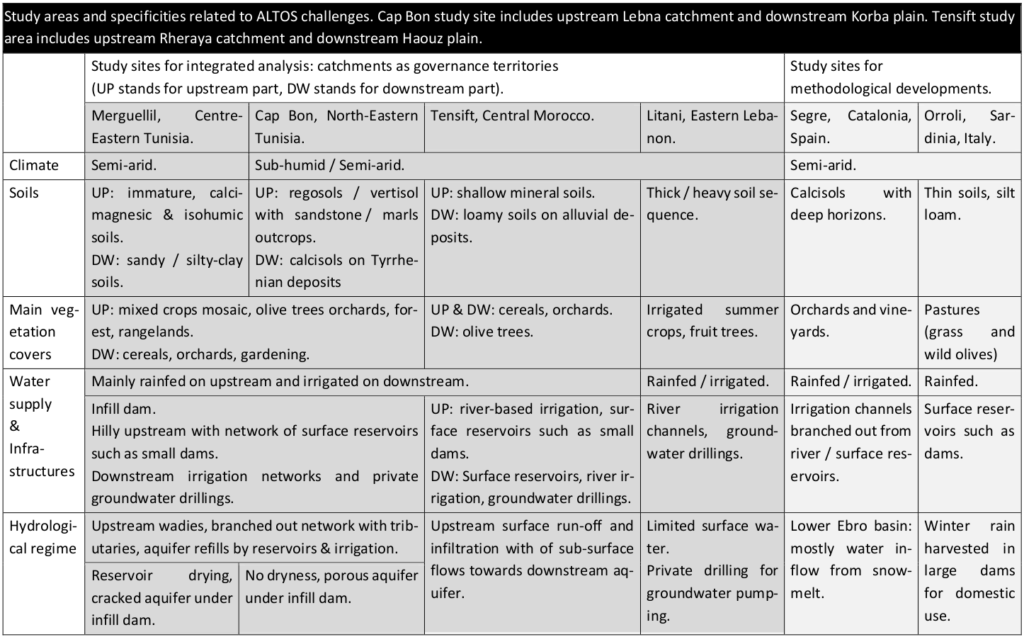Experimental Setup and Study Areas
The ALTOS project relies on two panels of study sites, including (1) four study sites for integrated analysis about evolutions and impacts, as well as (2) two study sites for methodological developments. Articulation between both aims to provide methodological developments, to be included within modelling tools devoted to integrated analysis.

As a whole within the Mediterranean Basin, they depict a climate gradient, the main soils, the traditional and modern agricultures, and the main landscaping features for resource management.
They are typified by large diversities in rainfed and irrigated crops, and by agricultural conversions either locally driven (e.g., from grain to cash crops or reversely depending upon access to water), or regionally / nationally driven (e.g., public policies for extension of specific crops).
They are water governance territories typified by infrastructures devoted to water harvesting / distribution. The two Tunisian sites include rainfed crops within hilly upstream / irrigated crops within downstream plain, with an infill dam between. The Moroccan and Lebanese sites include small farming within mountainous upstream / irrigated crops within downstream plain. Local managers are looking for decision support tools to design infrastructures and to anticipate their degradations.
These four study sites are part of long-term monitoring systems, with subsequent availability of datasets about socioeconomic and biophysical processes that permit to conduct integrated analysis. They are also part of long-term collaborations between some of the ALTOS partners, since they are included within the aforementioned community facilities. Thus, data are collected, processed and disseminated in accordance to EU standards (e.g., INSPIRE nomenclature, geospatial databases).

For methodological developments, the two study sites we select undergo innovative experiments related to ALTOS challenges such as water flows driven by heterogeneous media and agricultural practices, with expected impacts on hydrological flux modelling and water saving techniques. In Spain, managers are seeking decision support tools to design water supply systems focused on drip irrigation, as well as forecast tools for water allocation within catchments and irrigation districts. In Italy, managers are seeking knowledge on rangelands functioning and fate.
